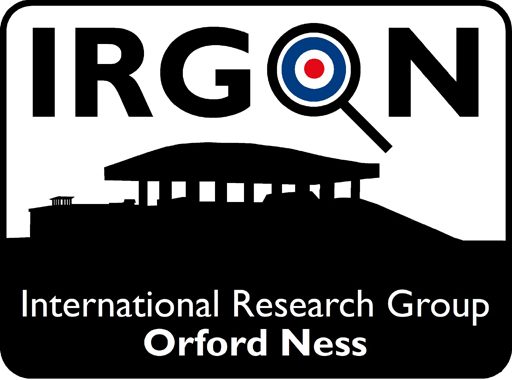
Lab. 2 building was handed over to S.A.X. at the end of August (1957). This building is intended for weapon and explosive assembly work and it is now being installed with the necessary equipment to deal with this type of work.
The above is an extract from Progress Report, 1st June – 1st September 1957 1. Author’s comments in parenthesis.
Originally designed as a process building with plenty of space, Lab 2 was chosen some four years after handover to be modified to house a 40 000g/lb centrifuge. The alternative would have been to construct a new building, and given the short duration of centrifuge trials, it was expected that not too much disruption would occur to the normal work in Lab 2. 2 Work on this proposal was started in late 1961.
Background for the centrifuge requirement
In the late 1950s, the British nuclear deterrent was based on free-fall weapons like Blue Danube, Violet Club and Yellow Sun. However by 1960 there were at least two ballistic missile projects on the cards, these being the home-grown Blue Streak MRBM and the US designed GAM-87 Skybolt ALBM.
The environmental conditions which a ballistic warhead must withstand are considerable. One of the critical phases is re-entry, where the warhead must withstand a considerable deceleration force. In 1962, when the British nuclear deterrent was planned to be carried on the air-launched ballistic missile Skybolt, a centrifuge was requested for Orford Ness.
It seems that the Skybolt requirement was the main trigger for the Orford Ness centrifuge. Rather puzzlingly, IRGON has not yet found any references to a testing requirement for a Blue Streak warhead, even though the Operational Requirement was issued in 1955 3 and the environmental conditions during re-entry would have been similar.
Even though it was an American missile, the Skybolt warhead was a British development, Red Snow being the primary option. It was anticipated that the Skybolt warhead would need to be tested at 40g for one minute to ensure that it would survive re-entry. 4
A Napier centrifuge was ordered, and Lab 2 was earmarked for the conversion. The proposal included the re-purposing of two 60HP Nevelin 5 electric motors, formally used on a vibration rig, to drive the new centrifuge. The centrifuge arm was 16ft (4.88m) in diameter, was capable of 40,000 g/lbs. A test piece weighing up to 1,000 lbs could be supported. The Weapons Group Board of Management received this proposal in April 1962. 6
The centrifuge was removed from Orford Ness when the site closed in 1971. Following modernisation work, the centrifuge is still believed to be in service today at AWE Aldermaston.
Notes and references
- ES 29/8, AWRE Orfordness: staff and trials progress, TNA via Anne Mallaband
- AB16/4053, Weapons Group Management Board: papers. TNA via Brian Burnell
- This was OR. 1142. See Blue Streak, Britain’s Medium Range Ballistic Missile, John Boyes, Fonthill Media 2019
- New Works Service request by the Weapons Group Board of Management, April 1962, from AB 16/4053
- Nevelin refers to a contemporary method of speed control for electric motors. This was a system designed by Lancashire Dynamo Nevelin of Oxted. A rival speed control system was the Ward-Leonard (seen by the author at Shell Thornton Research Centre). This was a cumbersome system comprising three machines, two of which were mechanically coupled. These coupled machines produced a variable DC supply to drive the third motor. See Industrial Electronics, C.W. Eggleton, Electrical, Electronic and Telecommunications Union publication, 1969
- AB16/4053, Weapons Group Management Board: papers. TNA via Brian Burnell
